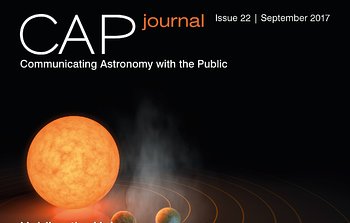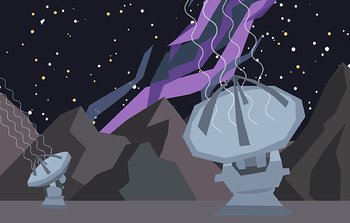The spectacular planetary nebula NGC 7009, or the Saturn Nebula, emerges from the darkness like a series of oddly-shaped bubbles, lit up in glorious pinks and blues. This colourful image was captured by the powerful MUSE instrument on ESO’s Very Large Telescope (VLT), as part of a study which mapped the dust inside a planetary nebula for the first time. The map — which reveals a wealth of intricate structures in the dust, including shells, a halo and a curious wave-like feature — will help astronomers understand how planetary nebulae develop their strange shapes and symmetries.
The release, images and videos are available on:
http://www.eso.org/public/news/eso1731/
Kind regards,
The ESO Education and Public Outreach Department
27 September 2017

|
26 September 2017: The 22nd issue of the Communicating Astronomy with the Public journal is out now!
In this issue you will find articles exploring the value and challenges of communicating in venues ...
|
| Read more |

|
25 September 2017: The human eye perceives light in the visible range of the spectrum, but this is just a tiny portion of the light that comes from the cosmos. What we see ...
|
| Read more |

|
Interview with: Petr Horálek
22 September 2017: The skies above ESO’s sites in the Atacama Desert in Chile are among the darkest and most pristine in the world. Professional astronomers use ESO’s advanced instrumentation to seek answers ...
|
| Read more |
|
|
|
|